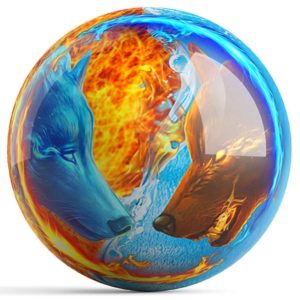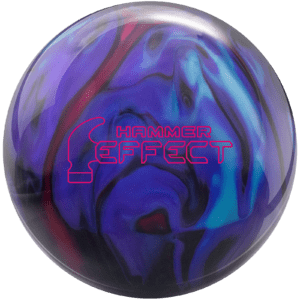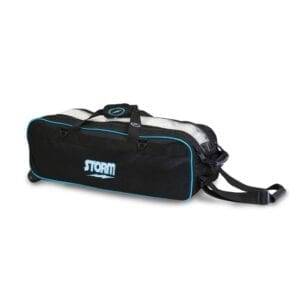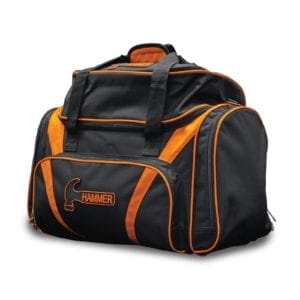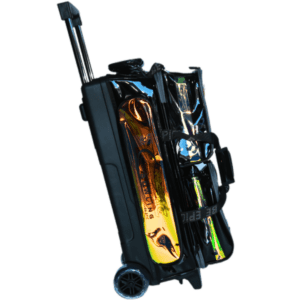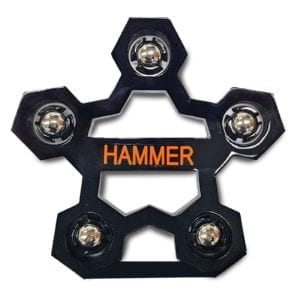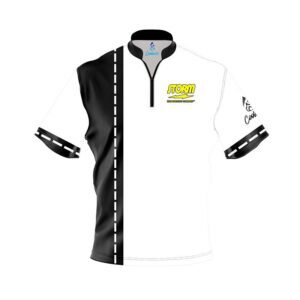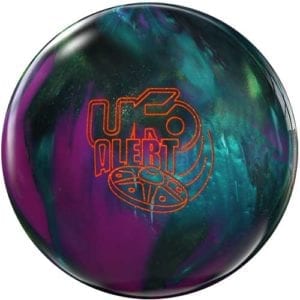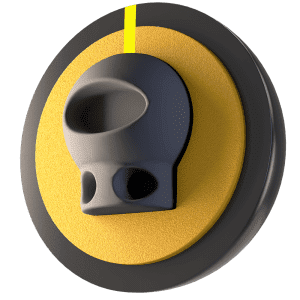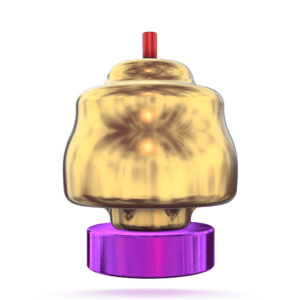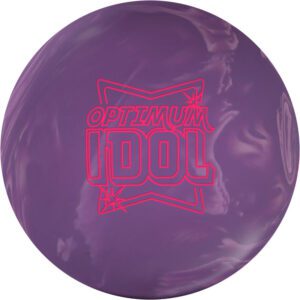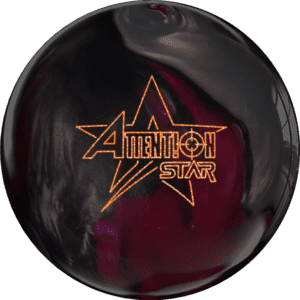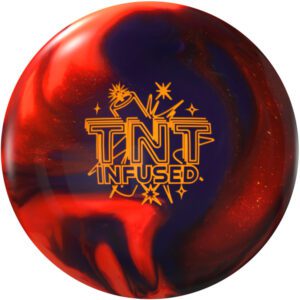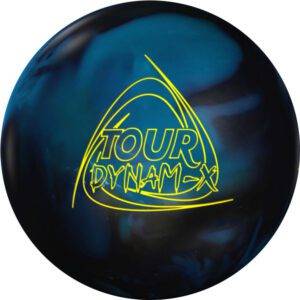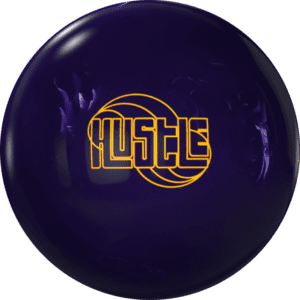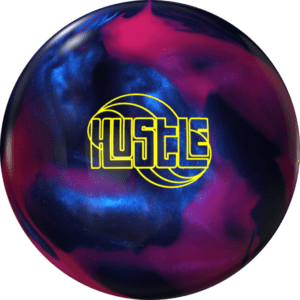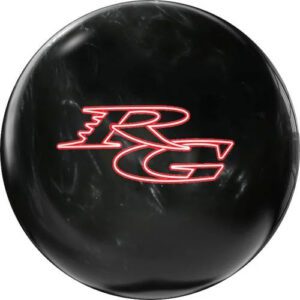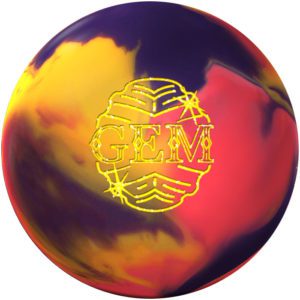Bowling Ball Videos, Luke Rosdahl Bowling Ball Reviews, Luke Rosdahl Reviews
Roto Grip Rubicon UC2 vs RST X-2 vs UFO Alert In Depth Comparison & Analysis by Luke Rosdahl
Comparing the roto grip uc2 - rst x-2 and ufo pearl bowling balls
In Depth Comparison For The Roto Grip UC2, UFO Alert & RST X-2 Bowling Balls
Hey everybody, I’m hitting the reset button and getting back to what I do best, so in this video we’re going to compare the Rubicon UC2, UFO Alert, and RST X-2. All 3 are in a very similar window or zone, but they do have a few nuances and things that separate them, so we’re going to take a deep dive into the comparison and hopefully learn a few things. I’m going to loop a few shots here at the beginning so you can get a good feel for how they react and how they compare, I find that watching the same shots repeatedly allows you to absorb it better, and see and pick up on different things with each playthrough rather than showing different shot after different shot. If you’re interested in buying one or all of them, I have a link at the end of the video and in the description to Bowler’s Mart, they’re a major sponsor of the channel now so supporting them supports me, and following one of my links will let them know I sent you. All 3 feature a variation of the etrax coverstock and they’re also all asymmetric. The UC2 features etrax Pearl and the Rondure mild asymmetric core, the Alert is etrax hybrid and the ET core, and the X2 is the etrax PLUS pearl and RST core. The Etrax cover formula is medium strength like Storm’s R2S that’s on balls like the Hyroad Pearl, IQ Emerald, and Astro PhysiX, it’s less aggressive in oil and more responsive on dry and works best on medium oil volumes. Cover formulas can be a tricky concept to understand, but at a very basic level, the stronger the formula is, the more oil it’s able to dig through, or given the same surface, something like the Parallax Effect will hook more than the RST X-2 because the cover formula on the Effect is quite a bit stronger, despite them both being pearl asymmetrics. Having different formula strengths is a big part of creating different ball reactions beyond just making them pearl, hybrid or solid, there’s quite a bit more variation beyond that. Etrax is a formula that’s going to be in play or match up the best with typical league conditions or broken down patterns, while it’s plenty responsive, it doesn’t quite have the teeth or strength for more volume like stronger covers do, it needs SOME friction to work with. The UC2 is etrax pearl and the Alert is etrax hybrid, and given the same formula, the pearl will usually be the longest and sharpest, while the solid will be the earliest and smoothest with the hybrid in between. That holds true for these two, with the UC2 being a bit longer and sharper than the Alert. The RST X-2 is etrax PLUS pearl, and represents a slight adjustment of the formula to make it a bit stronger. For me, that puts the reaction right between the UC2 and Alert, it’s not quite as long and flippy as the UC2, but not quite as early and smooth as the Alert.
Comparing The Bowling Ball Core Numbers
When we look at the cores, the numbers for the UC2 are 2.49 RG, .052 differential, .011 “split” is what most people call intermediate differential, so it has the lowest RG of the 3, but also the lowest split. The UFO Alert has a 2.52 RG, .054 differential and an .016 split, so it naturally wants to get down the lane a bit further and has a bit more torque, and the etrax HYBRID cover while still responsive is a bit earlier and smoother than the etrax pearl. Finally the X2 has a 2.53 RG, .053 differential and also an .016 split, so marginally weaker than the Alert, I don’t really think the difference there is anything you’re going to feel on the lane.
The UC2 is categorized as a mild asymmetric because it’s intermediate differential is lower than that of typical asyms. I’m not going to go into core tech because I’ll end up spending the whole video explaining cores and covers rather than talk bowling balls, there are plenty of videos that explain what the numbers mean, google and the YouTube search bar are your friend. There’s unfortunately a steep learning curve in bowling, but you have to learn it, I can’t explain the basics in every video. The lower the RG, the more the ball wants to rev and the sooner it wants to roll, but a lower intermediate differential reduces the torque somewhat. You wouldn’t know that by watching the UC2, but that’s part of the balance because the etrax pearl cover is extremely responsive, it doesn’t need a ton of help to move. The Alert has a higher RG, but also a higher differential. It doesn’t want to roll or rev quite as quickly as the UC2, but the cover is a bit stronger, and when it does start picking up, it’s firmer, but not necessarily quicker. When we get into the laneplay here in a minute, pay close attention to the UC2. When it hits the friction, it’s the sharpest of the 3, but if I keep it in the oil, it actually ends up being the smoothest because it’s more friction dependent. The Alert has a bit more torque and the hybrid cover offers a bit more dig, so it tends to be a little blendier on the friction and a little stronger in the oil so you don’t see as big of a shape delta. With the X2, again, the core is marginally weaker than the Alert, and the etrax plus pearl cover adds a little twist, I think the X2 is as strong as the Alert, but it’s a little more responsive, so that makes it a little longer and a little quicker but definitely very familiar, it does virtually the same things in the same places that the Alert does, but the small difference in the friction response ends up putting its best look on the lane in a different zone. When it comes to actual composite reaction, I have the UC2 the weakest, the Alert and X2 are about the same strength, the Alert is the earliest with the UC2 and X2 being about the same length, while the Alert is the smoothest, followed by the X2 that’s a little sharper, and then the UC2 even a bit sharper than the X2, I think it’s actually the most responsive ball I’ve ever thrown.
Lane Play Featuring 3 Different Parts of the Lane
Let’s get to lane-play now, I’m going to feature 3 different zones here and talk about each ball in each zone. I don’t necessarily want to talk arrows, because strokers or straighter players aren’t always going to have 2nd arrow, sometimes it’s a little outside or inside of that, but it’s a straighter zone. For both Angel and I, the Alert wins the straighter zone, it’s the earliest and smoothest of the 3, and when you have the bumper on the house shot out there, or the hard friction to the outside, a more responsive ball is going to cause issues most of the time because it’s going to react very strongly to friction. The Alert is a pretty round shaping continuous ball. It’s sharp enough and has enough torque, but there’s a balance to it, it’s controlled response, and this is usually what I start a league set with. Sometimes depending on the pair it’s a little long up front, but even if I have to start with something else, the Alert is coming out at some point.
The UC2 has the highest friction response and the lowest RG, so the core wants it to rev more and roll sooner, and the cover wants it to be faster on friction, so it’s the most sensitive from straight, and I said as much in the review, it’s kind of tough to get down the lane from straighter. Now, lower rev rates or people that generally have trouble creating shape will love the UC2 because if you can’t get this thing to shape, you need coaching, not bowling balls, but Angel and I both have somewhat average specs. We can make it work from here, but there’s a difference between making something work and it being the best option. People ask us all the time why we say something is good but they never hear of us throwing it or see the pros throwing it on tv, and the simple answer is that sometimes the situation for some balls doesn’t show up very often. I love Global’s Reality, but it’s too strong to throw the vast majority of the time. If I’m playing straighter in league, if that’s where the shot is, I’m probably throwing an Alert. UC2 is great, just not for either of us from this straighter zone.
The X2 is right in between the two. It’s not as good as the Alert from this zone, but it’s not as tough as the UC2. While I’d have trouble seeing a situation when the UC2 would be the play in this zone on a league or house type pattern, the X2 is a possibility depending on the backend strength. If the backends are a little soft, the shape of the X2 is similar enough to the Alert, and remember they have similar numbers. The X2 really prefers the 3rd arrow zone, or the track area on the right side at least. As two handers and bigger rev rates take over the world, 3rd arrow is becoming the lefty track and actually that’s where I’m most comfortable from, I like the ability to shape the ball and control the roll a little more than just launching or shoving it at the pocket. The righty brain is still there and I still see ball motion from a righty point of view dominantly, but the different perspective is pretty helpful.
The extra friction response over the Alert makes it more comfortable here, little more head oil, little more help from the angle, and plenty of sharpness to get it back up the hill. The shapes between it and the Alert are extremely similar, the X2 is virtually a longer and sharper version of the Alert. Not by much, but again, when we have the equipment available, we can pay more attention to the minutia. If I had an Alert and was looking at buying an X2, not a ton of reason because I can bend the Alert some and it looks good from this zone too, but even though it’s splitting hairs, when I start adding angle, the Alert slows down and the X2 comes into its wheelhouse. The X2 is the most versatile of the 3 I think, it can play straighter, it loves this middle 3rd arrow zone and it can get deep, where the Alert likes straighter angles and the UC2 likes to hook the lane.
Again, the Alert is solid from this zone. I give the edge to the X2, and the UC2 at this point is starting to warm up, but if the Alert looks good and I’m actually throwing it well enough to transition the lanes a little, I’ll likely stay in the Alert rather than try to ball change to the X2. Angel might start looking at the X2, but asymmetric stuff doesn’t see much time for her because it’s too strong, so at this point either the X2 or Alert would fit fine depending on if she needs more control or more boom, and the UC2 comes into the picture if she needs boom AND length. The picture is pretty muddy in this zone and you can pretty well flip a coin, the differences here are completely situational, and if you only have one of these 3 to work with, there’s no reason to have the other two if this is the zone you like and can usually stay in.
Footnotes for the UC2 from the 3rd arrow zone are that this is where it starts to warm up. Despite having the longest and sharpest cover, it also has the earliest core, which helps it rev and roll, and the friction response makes it fly. It has to have a little angle to work with if you have a medium to higher rev rate, there’s just no way around it. With a ball that both wants to spin up fast and be flippy, you have to give it room and roll it. In both our opinion, it greatly prefers to cover boards, and it’s really built for that. Cleaner and more responsive cover but with a rollier core to get it started up earlier, it’s built for medium conditions or for the big wheel when a heavier pattern gets beat up.
Using These 3 Different Roto Grip Bowling Balls For Deeper Angles
As we move deeper, this is where it’s most comfortable. The core keeps it coming, and the torque starts to suffer a tad from deeper, but the cleaner cover lets you hit it and roll it, and that was the design intent anyway. It’s less a fresh shot ball and more when you’re forced inside after the lanes transition. The cleaner cover gets it down the lane, the friction response helps it get back up the hill, and the core also helps there too with the fast revving rolly shape. Again, that core bridges the gap between something like the Ikon core in the Idols and stronger cores like the Atomic core in the PhysiX line. From this deep, Idols aren’t going to make the corner, there’s not enough guts, and the Atomic is extremely strong, so it might use too much energy too quickly, so the UC2 fills that gap. It’s built to fly, and it does it well.
The X2 looks great from deeper angles too and could be a go to if you need similar length but more torque. The RG is going to help it push a bit, the slightly stronger cover is going to create the balance, and the extra torque is going to help it pull up if the UC2 is a bit too clean. However, if you need the stronger revving and earlier rolling of the UC2, the X2 can go just a bit too long from the steeper angles if the lanes aren’t quite ready for it yet. However again, if you’ve got a lot of hand, you might benefit more from the X2, or even the Alert depending on your speed. Naturally though, I think the UC2 thrives from here or looks the best, the X2 is a close second, and the Alert starts getting slow.
With the Alert being the earliest and slowest of the 3, though not by any means actually early and slow, it does ok in this deep, but medium RG, cleaner cover formula, and rounder shape isn’t often likely to be the play in this deep. If you have a bigger rev rate and medium to slower speed, the Alert is likely to be a GOAT for you, but if you’re more matched, the UC2 or X2 will be a better choice in deeper. Now if you just have an Alert, you’re going to be fine, it’s still plenty good in here but the point of this video is to split hairs and get as specific as possible. It starts getting a little long or slow in here, but it’s workable, just requires a bit more of a physical adjustment. I prefer physical adjustments, if something is already working, I won’t go out of my way to make a ball change unless I’m forced to.
In Summary For The Roto Grip UC2, UFO Alert & RST X-2 Bowling Balls
In conclusion, these are all pretty similar balls. I’d recommend the Alert for straighter players, the X2 for those who like playing the track, and the UC2 for those who like the big wheels, but if you have any of the 3, you’re unlikely to need one of the other two. I actually run the Alert and X2 in tandem, I like that zone or that general look or strength, so having the delta in that zone is helpful, but Angel prefers the X2 out of the 3 because she lives at 3rd arrow and it gives her the most versatility. We both like all 3 of them though, it’s not like there’s a bad choice to be made here. The UC2 showed up for a lot of the men during the summer swing, and Josie Barnes just won the women’s US Open and 100 grand with a combo of the X2 and Alert, so these are reactions that are going to be in play for everyone, but being perfectly honest, there’s a solid amount of overlap and if you’re strapped for cash or don’t like toting a lot of stuff around, 1 of the 3 should do you just fine. Thanks for watching and may the strikes be with you.
roto grip uc2 bowling ball
Powered by the same mildly asymmetric Rondure Core as one of the hottest balls on the planet, the Rubicon UC2 (Ultimate Concept 2)
showcases our latest eTrax pearlized coverstock formulation which automatically thrusts this ball onto the “MUST HAVE” list for any bowler.
It’s ok, you can thank us later!
Engineered for those Medium to Medium-Heavy Oil conditions, we felt it was an absolute must to provide added core technology in this line in order to create advanced ball motion since balance holes are no longer legal in sanctioned competition.
Coverstock: eTrax-S20™
Weight Block: Rondure™ Core (Aymmetrical)
Factory Finish: 3000-grit Pad
Flare Potential: Medium-High
Radius of Gyration (RG) 15lbs – 2.49
Differential (Diff) 15lbs – 0.052
Intermediate Differential (Diff): 0.011
roto grip ufo alert bowling ball
Our obsession with helping players of all ages and styles conquer various lane conditions while abiding to forthcoming governing rules, led to the development and creation of the asymmetrical E.T.™ Core (Equalizer Technology Core) which features built in cavities in order to increase weight displacement after drilling without a balance hole to increase overall ball motion.
The MicroTrax (Micro Nanoparticle Traction) Coverstock offers the optimum balance of midlane traction and responsiveness to friction thanks the blend of nanoparticles throughout the coverstock. This formulation maintains its surface profile texture longer to ensure you get maximum performance while displacing oil at an above average rate compared to other coverstock materials on the market today.
Assembled for every bowler in the universe, the UFO™ Alert is here to help you navigate those Medium to Medium/Heavy Oil Conditions with ease. No matter your style, no matter your rev rate, no matter your speed, the E.T.™ Core (Equalizer Technology Core) with its built in cavities, is sure to create great overall core motion every time due to the added mass displacement when drilled. And we can’t forget about the eTrax™ Hybrid Coverstock which is made of 2 parts pearl and1 part solid. This cover combination aids in creating plenty of responsiveness to friction down lane without being too angular. Thus, making this combination of core and cover one of the most ideal options ever created for most any house type oil condition on planet earth.
COVERSTOCK:e-Trax™ Hybrid Reactive
CORE: E.T.™ Core
COLOR: Purple Solid/Emerald/Teal
FINISH: 1500-grit Polished
CONDITION: Medium Oil – Medium/Heavy Oil
FLARE POTENTIAL: High
AVAILABLE WEIGHTS: 12 – 16 lbs.
PRODUCT SKU: RAE
RG (15lb): 2.52
Diff (15lb): .054
roto grip rst x-2 bowling ball
Given the continued success of the RST™ X-1, we knew the next ball in the series using the Roto Star Tour Core was going to need a special coverstock wrapped around it as well. So, after countless tests involving multiple players of different styles, we determined that the eTrax™ pearl material gave us the type of reaction we were looking for, but we wanted something a little more while still using that same chemistry. So, the R&D team went to work changing the ratios and other variables until we settled in on the NEW eTrax™ PLUS Pearl Reactive formula that provides a larger footprint throughout the entire lane without reducing the responsiveness to friction down lane. Creating yet another viable pearlized coverstock option for the Roto Grip family of balls.
Professional bowlers like to see continuous motion down lane with minimal deflection as the ball enters the pocket due to their rev rates usually being on the higher side. This logic was the basis of development by the R&D team as they looked to create a core that would maintain dynamics after drilling in order to maintain a higher level of core torque down lane. The larger mass at the base of the core does indeed create that. Especially since when drilled, the thumbhole will always end up in the void area not really affect the bottom mass of the core. Thus, making this core a “Tour Level” type core design better known as the Roto Star Tour Core (RST™ Core).
Coverstock Name E-Trax™+
Coverstock Style Pearl
Coverstock Type Reactive
Weight Block RST™ Core = Roto Star Tour™ (Asymmetrical)
Color Tanzanite
Finish 1500 Polished
Finish Method Can be Polished OR Can be Sanded More
Durometer 73-75 on D-Scale
Flare Potential High
Weights 16lbs – 12lbs
RG: 2.53
DIFF: .053
PSA:.016










